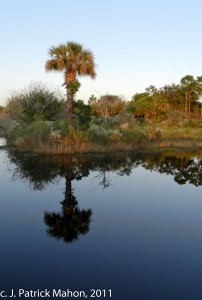Chaucer’s pilgrims gathered and went to Canterbury, burial place of Thomas Becket. They told their stories, some quite bawdy, along the way to the shrine.
Traditionally, pilgrims from all religious backgrounds gather for travel to holy places. Muslims have the Hajj. Christians have Rome and Jerusalem.
Irish pilgrims may be the best known as they sailed forth in their currachs to distant places. An island off the western coast of Ireland served as a monastery for centuries as monks endured austere life on this North Atlantic crag. Skellig Michael is today a place of pilgrimage.
The Way, staring Martin Sheen and directed by his son, Emilio Estavez, presents us with a modern pilgrimage to the Cathedral of Santiago Compostela. It is a 500 hundred mile pilgrimage from southwestern France across northern Spain to the traditional burial site of the Apostle James. I say “traditional” because on our pilgrimage to Jerusalem, the Holy Land and Palestine, I asked our tour guide, “Is this the upper room of the last supper.” He replied, “This is the traditional site.”
Tom (Martin Sheen), an ophthalmologist from California, is notified that his son, Daniel, has died in severe weather in the Pyrenees as he began his pilgrimage on the El Camino. Tom travels to France to identify the remains of his son and ends up completing the pilgrimage Daniel began as he scatters his ashes along the way.
As in the Canterbury Tales, Tom is joined by three other pilgrims. He meets a large verbose Dutchman who says he is doing the Camino to lose weight so he can get into his current suit for a wedding. A second character, an angry battered divorcee, joins the group. Along the way they encounter an eccentric Irish writer who is suffering from writer’s block. This motley crew slowly wends its way to Santiago and beyond surrounded by the beauty of nature and the archaic towns that dot the path.
The movie has stuck with me and haunted me since I saw it last Monday. Estavez has done an outstanding job of portraying pilgrimage as the inner journey which is something Thomas Merton understood quite clearly as he studied Irish monasticism. Pilgrimage is indeed an inner journey. I feel like I have been on a pilgrimage all week.
Pilgrimage requires letting go of control and surrendering to what comes along the way–no shelter, lack of food, inclement weather, etc..We sense that Tom and the others are struggling with inner things as they walk the paths. The divorcee supposedly is making the pilgrimage so she can give up smoking when she reaches the cathedral but in the end she says it was not about smoking. It was about guilt over an abortion. The Dutchman, consuming huge legs of lamb along the way, admits that he can buy another larger suit and the Irish writer overcomes writer’s block as he records the details of Tom’s story.
Tom, struggling with the loss of his only son who dropped out of graduate school to do the Camino, seems to come to grips with his life. Early on he walked alone, apart from the others. Later he will walk together with them to the sea.
At one refugio (overnight hostel) Tom gets quite drunk and tells the others exactly what he thinks of them. He was quite angry with the Dutchman who revealed his story about Daniel’s ashes to the others.
As the characters resolve issues related to their respective inner journeys, they begin to bond in friendship. They reach the cathedral and touch the statue of James the Apostle. Previously, they had told Tom they would not accompany him to the sea to bury his son’s remaining ashes as the gypsy had advised. Inner transformation led to friendship which then led them to accompany Tom to the sea coast where he spreads the rest of Daniel’s ashes.
Pilgrimage is indeed about the inner journey. In Merton’s language it is about the journey from the false self to the true self. The true self seeks God alone and eschews selfish ambition and self-seeking. It is a lifelong pilgrimage into the inner room where we encounter God. It is the pilgrimage toward becoming divine. Jesus became human so that we might become divine.
Richard Rohr says that we begin to discover the true self when we realize that is not all about me. Rohr would describe pilgrimage as the journey from addiction to emotional sobriety:
Until we achieve emotional detachment, distance, and balance in our lives, we are all addicts—to our own mental and emotional patterns! . . . Only a patient and loving practice of letting go of compulsive thoughts, which we call early stage contemplation, is a tried and true path toward emotional sobriety.
Pilgrimage is such a practice. Each step along the way guides us deeper into our inner self where we encounter the divine. Our daily life is very much a pilgrimage as we struggle to become what we already are.

